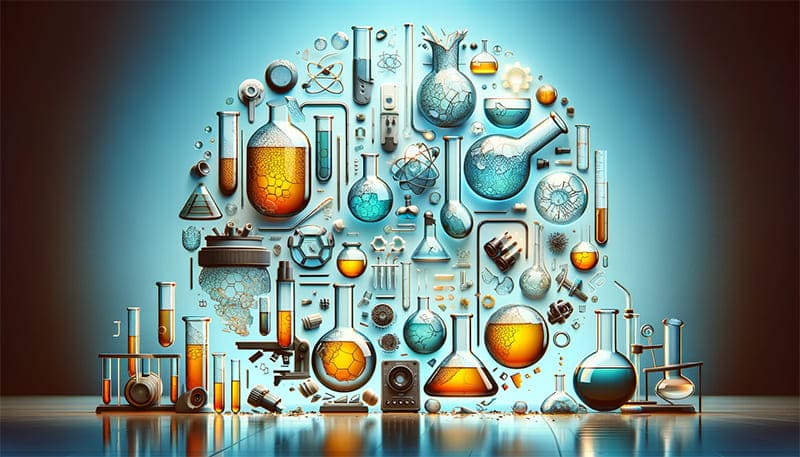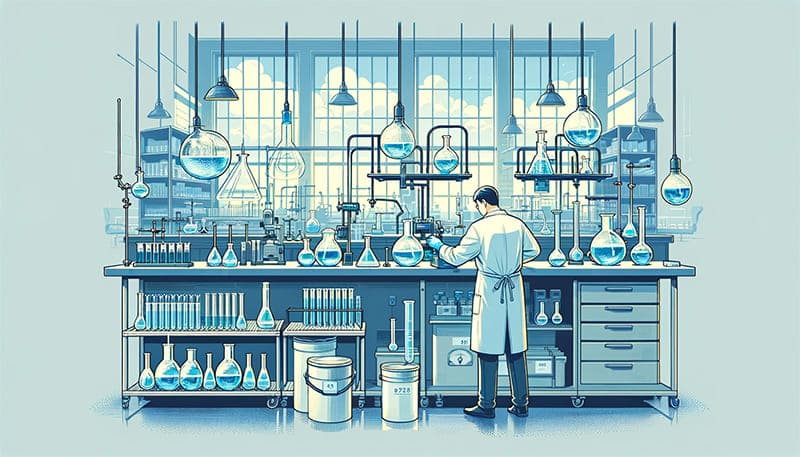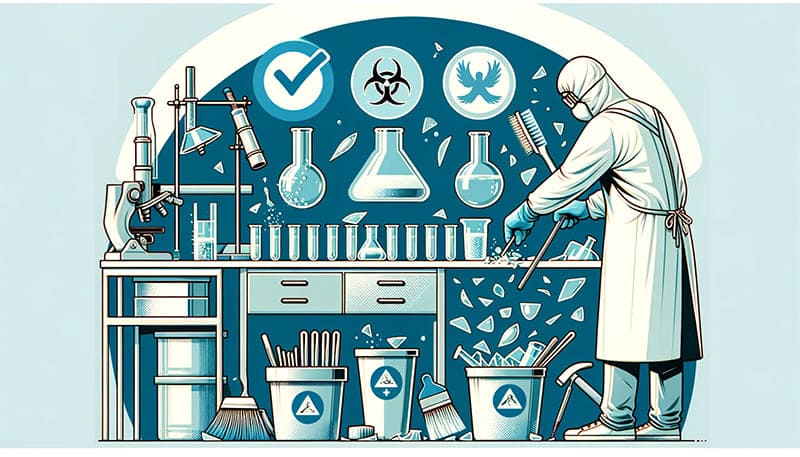Have you ever wondered why your lab glassware breaks so often? Is it just bad luck, or are there underlying factors at play? Glassware is an integral part of any laboratory, but it can be frustratingly fragile.
In this article, we delve into the ’15 Major Culprits Behind Laboratory Glassware Breakage’, providing insights into why these unfortunate incidents occur and how to prevent them. Understanding these factors is crucial for any lab professional or student, ensuring safety and efficiency in your scientific endeavors.

15 Key Reasons Why Lab Glassware Breaks
In the realm of scientific research, laboratory glassware stands as a cornerstone of precision and reliability. Yet, despite its fundamental role, glassware often falls victim to breakage, leading to setbacks in experimentation and potential safety hazards.This article aims to shed light on the “15 Key Reasons Why Lab Glassware Breaks,” offering insights into the common yet often overlooked factors that lead to the fragility and failure of these essential tools.
1. Material Flaws
Material Issues: Some glass instruments may have issues with thin material and fragile texture, making them prone to breakage when handling high or low temperatures or corrosive substances. Additionally, manufacturing defects such as bubbles or streaks can weaken the glass, increasing its likelihood of breaking.
2. Thermal Stress
Thermal Expansion and Contraction: In the lab, glass instruments may experience temperature changes. Due to the effects of thermal expansion and contraction, these instruments can break. This is especially true when there is a sudden cooling from a high temperature or sudden heating from a low temperature, as the rapid change can cause the glass to fracture.
3. Chemical Corrosion
Chemical Corrosion: Certain corrosive chemicals can react with glass instruments, causing them to break. For instance, strong acids or bases might react with the glass, weakening it and eventually leading to breakage.
4.Mechanical Impact
Impact from External Forces: Glass instruments can be damaged by external forces during use, such as improper handling, dropping, or collisions. These forces can cause the instruments to break.
5. Improper Use
Improper Use: Incorrect use and maintenance of glass instruments can also lead to breakage. For example, using inappropriate cleaning methods, heating techniques, or not properly handling the instruments during transportation and storage can increase the risk of breakage.
6.Wear and Tear
Aging and Wear: Long-term use of glass instruments can lead to aging and wear, affecting their strength and lifespan, and ultimately causing them to break.
7. Improper Glassware Matching for Experiments
Improper Glassware Matching for Experiments: Using the wrong type of glassware for specific experiments can lead to breakage. For instance, using a flask meant for mixing chemicals for a high-heat application can cause the glass to crack under the thermal stress.
8. Environmental Factors in the Lab
Environmental Factors in the Lab: Conditions like high humidity, fluctuating temperatures, or corrosive atmospheres in the laboratory can deteriorate glassware over time, making it more susceptible to breaking.
9. Rapid Cooling or Heating
Rapid Cooling or Heating is a common mistake in labs. Slow and steady temperature changes are key to preserving the integrity of glassware.
10. Not Adhering to Load Limits
Not Adhering to Load Limits of glassware can be a subtle yet significant factor. Overloading glass containers with too much weight or volume, especially during heating or mixing processes, can lead to stress fractures or shattering. Glassware with too much material or heat can cause it to crack or shatter.
11. Excessive Vigor in Mixing or Stirring
Excessive Vigor in Mixing or Stirring contents in glass containers can cause mechanical stress. Gentle and appropriate agitation is key to preventing internal stress that can lead to cracks or breakage.
12. Failure to Use Supporting Equipment
Failure to Use Supporting Equipment like ring stands or clamps can result in accidents. Glassware, especially when heated or containing reactive substances, should be securely supported to prevent tipping or falling.
13. Stacking Glassware Improperly
Stacking Glassware Improperly in storage can put undue stress on the pieces at the bottom. Proper storage techniques are essential to prevent unnecessary pressure that can cause cracks or breakage.
14. Neglecting Regular Maintenance
Neglecting Regular Maintenance of lab glassware can lead to unnoticed damages accumulating over time. Regular checks and maintenance are crucial to identify and rectify any potential weak spots or damages before they lead to breakage.
15. Not Following Standard Operating Procedures
Not Following Standard Operating Procedures (SOPs) can increase the risk of glassware breakage. SOPs are designed to ensure the safe use of laboratory equipment, including glassware.
Understanding why lab glassware breaks is crucial for maintaining a safe, efficient laboratory. Recognizing and addressing these factors can greatly reduce risks, ensuring the longevity and reliability of essential scientific tools.

Essential Strategies to Prevent Laboratory Glassware Breakage
Having explored the 15 major culprits behind the breakage of laboratory glassware, it’s crucial to address how we can prevent these incidents. Implementing effective strategies not only ensures the longevity of the glassware but also upholds safety standards in the lab. Here are key preventive measures corresponding to each of the previously discussed reasons:
- For Material Flaws: Regularly inspect glassware for any manufacturing defects such as thin walls, bubbles, or streaks. Investing in high-quality, laboratory-grade glassware can significantly reduce the risk of breakage due to material flaws.
- Against Thermal Stress: Gradually introduce glassware to extreme temperatures. Avoid direct flame exposure and use water baths or heating mantles for uniform heating. Allow glassware to cool down naturally before cleaning or storing.
- Combating Chemical Corrosion: Use glassware made of materials that are resistant to the chemicals you work with. Regularly inspect for any signs of etching or degradation, especially when using strong acids or bases.
- Mitigating Mechanical Impact: Handle glassware gently. Use cushioning materials during storage and transportation, and avoid overcrowding shelves to prevent accidental knocks or drops.
- Preventing Improper Use: Educate lab personnel on the correct usage of each type of glassware. Emphasize the importance of using glassware for its intended purpose only.
- Addressing Wear and Tear: Replace old or worn-out glassware on a regular basis. Implement a system for tracking the usage and age of glassware to anticipate when replacements might be necessary.
- Selecting Appropriate Glassware for Experiments: Ensure the right type of glassware is used for specific experiments. For instance, use borosilicate glass for experiments involving sudden temperature changes.
- Managing Environmental Factors: Maintain a stable environment in the lab. Control factors like temperature, humidity, and exposure to corrosive gases to prevent gradual deterioration of glassware.
- Avoiding Rapid Temperature Changes: Implement slow and controlled heating and cooling processes. Avoid placing hot glassware on cold surfaces and vice versa.
- Adhering to Load Limits: Be mindful of the capacity limits of glassware, especially when mixing or heating substances. Overloading can create undue stress, leading to breakage.
- Gentle Mixing and Stirring: Avoid vigorous stirring or shaking of glass containers. Use mechanical stirrers where appropriate to distribute stress evenly.
- Using Supporting Equipment: Always secure glassware using clamps, stands, or supports, particularly when it’s being heated or contains hazardous substances.
- Proper Storage Techniques: Store glassware correctly to avoid stress and potential breakage. Avoid stacking heavy items and use lined cabinets or shelves.
- Regular Maintenance and Inspection: Establish a routine for inspecting and cleaning glassware. Look for signs of damage like chips or cracks that could lead to future breakage.
- Following Standard Operating Procedures: Adhere to SOPs designed to ensure safe and correct use of all lab equipment, including glassware. Regular training and updates on these procedures can help prevent mishandling.
By incorporating these preventive measures, laboratory environments can become safer and more efficient. Regular training and awareness are key to ensuring these practices are implemented effectively, reducing the risk of glassware breakage and maintaining the integrity of scientific work.

Correct and Standard Practices for Handling Broken Laboratory Glassware
Dealing with broken glassware in the laboratory requires a careful and standardized approach to ensure safety and prevent contamination. Here’s a guide on how to handle such incidents properly:
- Immediate Response: As soon as breakage occurs, alert everyone in the vicinity to prevent accidental injuries. Assess the situation to determine if any hazardous chemicals are involved.
- Personal Protective Equipment (PPE): Before handling broken glass, ensure you are wearing appropriate PPE, including lab gloves, safety goggles, and a lab coat. This is essential to protect against cuts and exposure to any chemicals that might be on the glass.
- Containment of the Area: Secure and isolate the area around the broken glassware to prevent further accidents. This is particularly important if the glassware contained hazardous substances.
- Proper Clean-Up Methods: Use a brush and dustpan, or a similar tool, to safely gather broken glass. Never use bare hands. For smaller shards, sticky tape can be effective. If the glassware contained hazardous chemicals, follow your lab’s protocol for spill clean-up.
- Disposal of Broken Glass: Dispose of the broken glass in designated sharps containers, not in regular trash bins. This prevents injury to anyone handling the waste. Label the container if the glass was in contact with hazardous chemicals.
- Handling Chemical Contamination: If the broken glassware contained hazardous chemicals, additional clean-up procedures must be followed. Use appropriate neutralizing agents and cleaning methods as per your lab’s chemical spill protocol.
- Reporting the Incident: Report the breakage to your supervisor or lab manager. Keeping a record of such incidents can help in identifying patterns and potential areas for improvement in lab practices.
- Review and Learn: After the situation is resolved, review the incident to understand what went wrong and how similar incidents can be prevented in the future. This could involve revisiting training procedures or laboratory protocols.
- Medical Attention for Injuries: If anyone is injured during the incident, seek immediate medical attention. Even minor cuts should be treated promptly to prevent infection.
- Follow-up Procedures: If the breakage involved particularly hazardous materials, follow-up procedures might be necessary, such as monitoring the area for contamination or conducting health checks for those exposed.
- Training and Awareness: Regular training sessions on handling laboratory accidents, including broken glassware, are crucial. All lab personnel should be familiar with the procedures and protocols.
- Maintenance of Safety Equipment: Ensure that all safety equipment, like first aid kits and spill kits, are easily accessible, well-stocked, and regularly maintained.
By following these standardized practices, the risks associated with broken laboratory glassware can be effectively managed. This not only ensures the safety of all lab personnel but also helps in maintaining a functional and efficient working environment.
Conclusion
In summary, understanding and addressing these 15 key factors can revolutionize laboratory safety and efficiency. We call upon lab professionals and students to embrace this knowledge, integrate these practices, and champion a culture of mindfulness and precision in their scientific endeavors. Let this be a call to action, a step towards a safer, more productive laboratory environment where every piece of glassware is treated with the respect and care it deserves.










